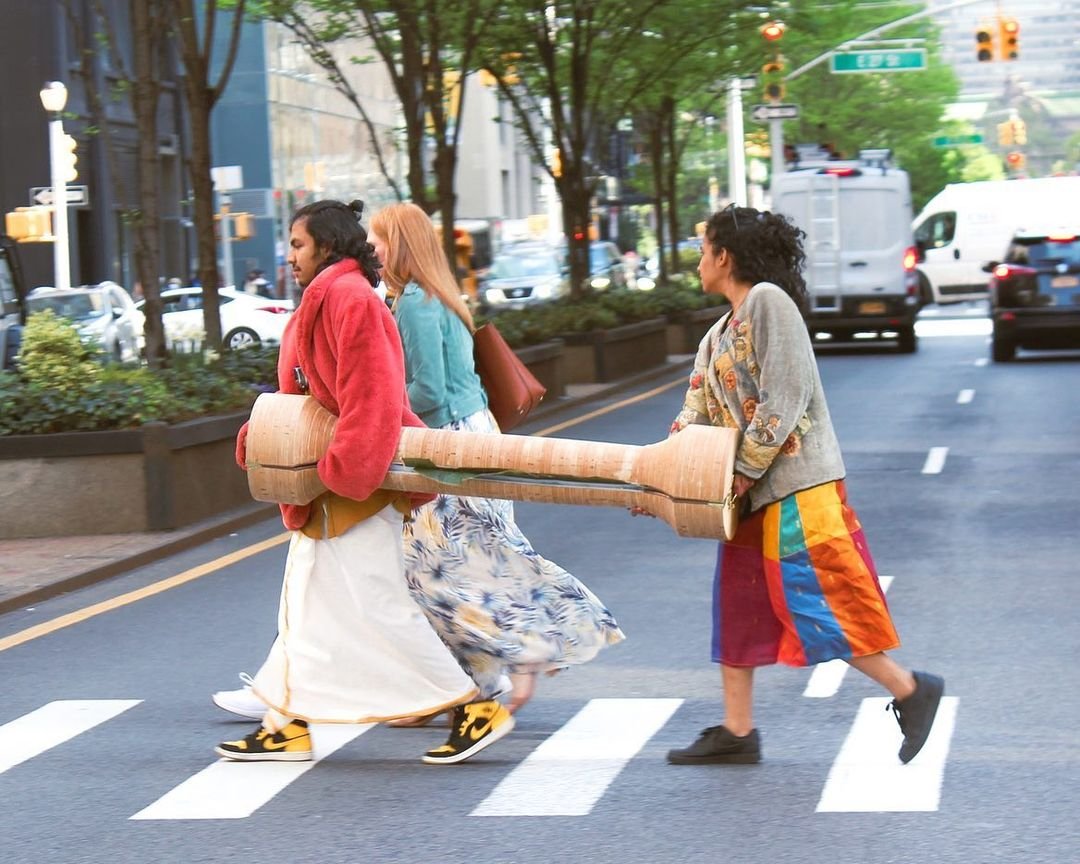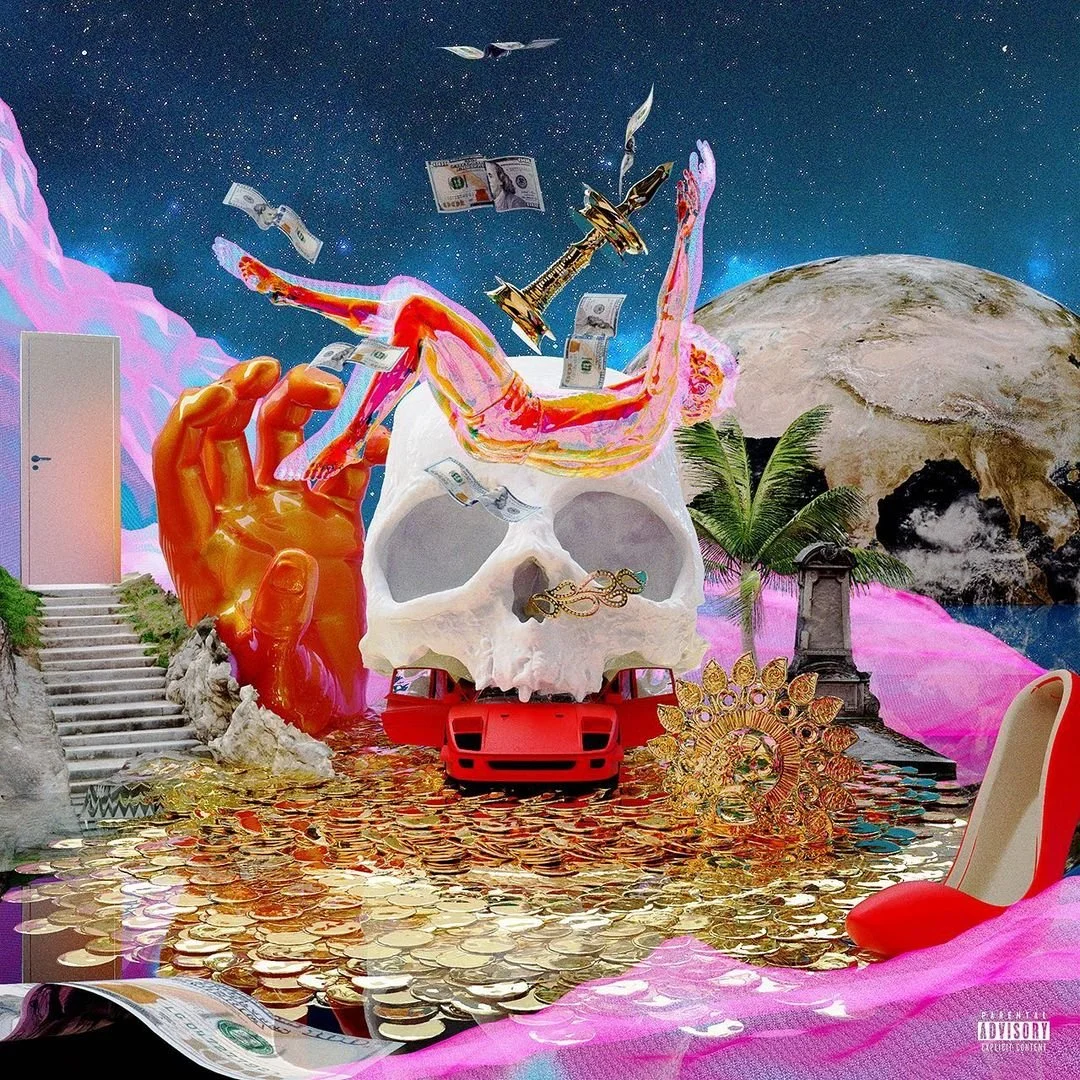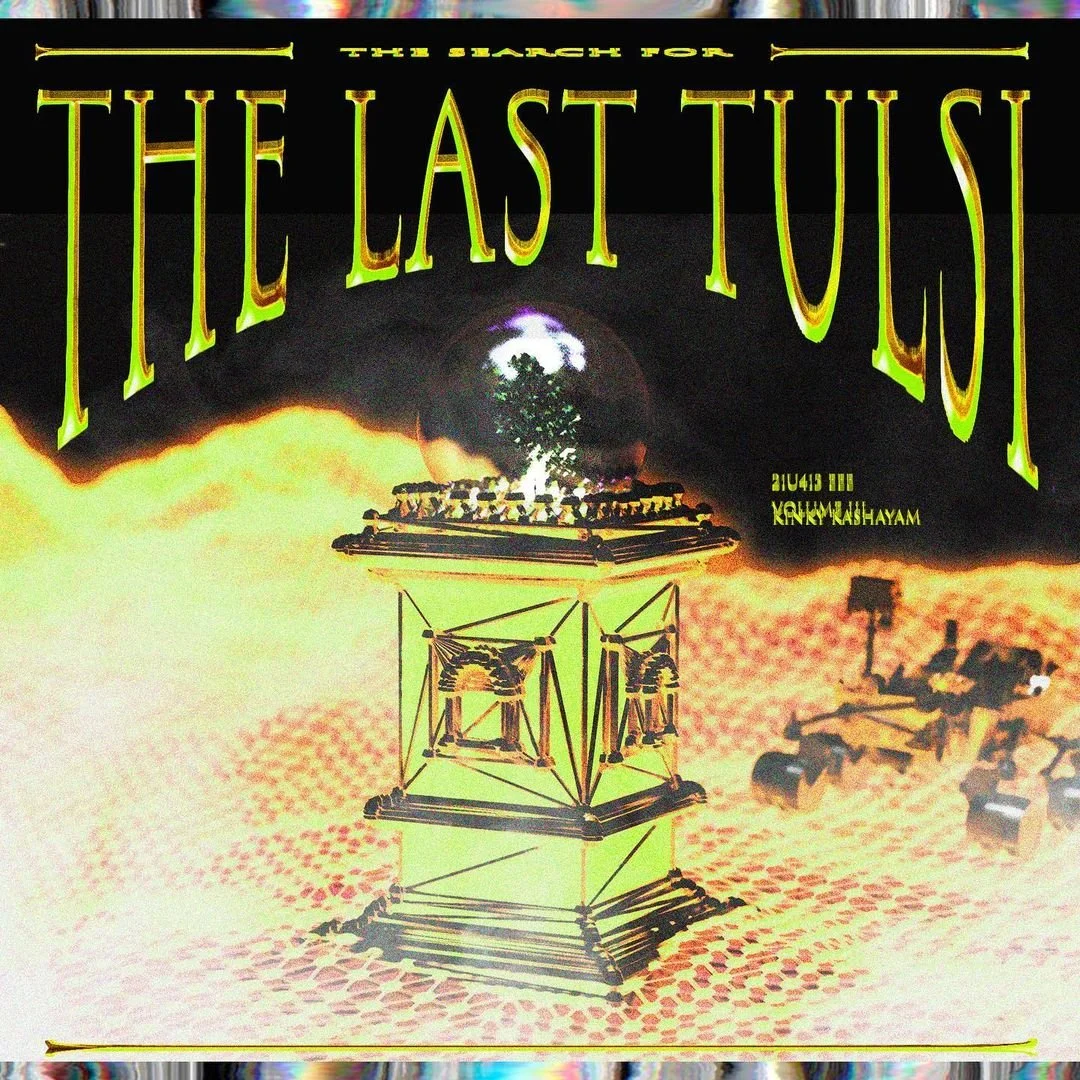Kinky Kashayam
The local South Asian culture gets entangled with western ideologies. Kinky Kashayam reflects on India’s influence of westernization with a sarcastic and rather humorous twist.
So my first question for both of you is wanting to know your backstory first. How was growing up for you and how did you first meet? Please describe the south Indian landscape that you grew up in and its relation to the west.
Southern India is arguably some of the most diverse regions in the subcontinent, with each of its states taking pride in possessing distinct languages, ways of dressing, cultures, and cuisines.
We met each other in high school. Something that we quickly bonded over was how both of us were ‘culturally ambidextrous’. We both grew up in Malayalee households in Tamil Nadu. Like many that grew up like us, we spoke Malayalam at home, Tamil to our friends, and English in school. Malayalam is the language spoken in Kerala, which is right next to Tamil-speaking Tamil Nadu, both of which are two of the southernmost states in the peninsula.
The two languages have a lot of words in common but are far from being the same. Growing up amidst rich Tamil and Malayali cultures in postcolonial English acclimated southern India is the sweet spot from where our stories come from.
Our artistic pursuit germinated when we realized that we both had this hunger for knowledge. We loved to think, explore philosophies and keep updated on the news. We were both storytellers in our own ways expressing our ideas in our own forms. After meeting in boarding school, we realized we had unique and different creative visions that easily aligned on the same wavelength. Our first joint projects were writing, directing, and stage managing theater productions funded by our school. That was the beginning of our journey. We've had several creative ideas and ventures since then - some of them came to fruition while others didn’t.
Please take us through your initial phases of exploring cultures, their differences, and the quirks that you are now working upon. How and what were you fascinated and set aback by?
As we previously mentioned, we’ve had a plethora of creative ventures in the past. After much deliberation, we stumbled upon a treasure that had been such a normal aspect of our life - our city. We didn’t start thinking broadly about ‘culture and identity just yet. Until then our ideas did not have a purpose. And the lack of purpose would often lead these ideas to a dead end. But one day while walking past the flower market in our city - Coimbatore, we realized the layers of beauty built into it. The conversations of people, chirping of the birds, honking of the vehicles, the fragrance of the flowers, and the numerous wall advertisements - these layers that weaved together to form a city. We started seeing the city as a performance where all the people were actors and they all played the role. Though it didn’t provide a rigid purpose for our ideas, it gave us something to marvel at and wonder at. The more we marveled, the finer the details became, and the more we started noticing the blemishes. In spite of being so beautiful, the country was still riddled with several social issues. We decided to do something about it.
One of the first quirks we witnessed was the unintended fashion statements that were made by the graphic t-shirts that we wore. It is a common sight to see many Indians mindlessly wearing t-shirts that screams the names of western cities like New York or Chicago. We didn't understand why people wouldn't want to wear their own cities on their t-shirts or if they even thought about what they boasted on their chests.
It was as if the West was a brand. A highly seductive one that we bought into without a second thought. We noticed this time and time again in our initial investigations and very much wanted to push the envelope in that direction.
Initially, the way we saw it, we wanted to convince people that there is no shame in carrying the name of their own city, Therefore, we started the process of producing t-shirts that carried the name of various Indian cities. We conducted an immersive deep dive into garment production in the state of Tamil Nadu. We toured factories and made connections with some big names in the industry. However, something didn’t feel right. We understood that by putting all our effort into this one cause, we wouldn’t be able to address any other quirks we identified. We need something more versatile. A medium of expression that will allow us to go up and beyond. A medium that would have a better reach and would speak to the people.
When we moved to bigger cities outside of Coimbatore, to New York and Toronto, and saw more cultures and types of people, more quirks became apparent.
Why were we penalized for speaking our native tongues in middle school? Why were we forced to ONLY speak English?
Even knowing all of its benefits, why is the ‘Indian toilet’ seen as less dignified?
Why is cultural shame still ‘alive’ after 75 years of ‘Independence’?
These were some of the pivotal points of inquiry that drove our creative pursuit and what would eventually become the Kinky way. Questions of ‘culture and identity became the forefront of our artistic investigation.
We became hungrier for knowledge and our curiosity was peaking. The artwork that we once thought was our city had expanded and it included a far more diverse community. Our meaning of home changed and we were in this state of trance riddled with exploration and adventures.
But within months we had to move back to India because of the pandemic. The realizations we underwent about ‘home’ during our time away came face to face with the realities of ‘home.’
That was the birth of Kinky Kashayam.
We wanted to narrate stories that were ultimately a reflection of ourselves. Our journey is very clearly shown in the kind of art and themes we’ve worked with over the years. We are still evolving with our art as we learn more about the world and the people in it.
You have brought light on many funny but also harshly realistic facts about Indian society. By humorizing the notion at times along with a sarcastic punch you are reaching to people of color in a way that brings edge and humor. The fact that most south Asian communities can only relate to it the most, what do you wish the westerners to learn or know on the contrary?
Our art is just a reflection of who we are and what we think. We try to break orthodox social hierarchies that we think don’t have a place anymore in today’s world. We break these orthodoxies by using the language of humor, satire, and sarcasm to create provocations that seem harmless at a first glance but upon second thought delve into complex themes and topics. That is the Kinky way. We like to question everything and encourage others to question as well.
Hierarchies bother us. Why would ‘eating by hand’ be considered barbaric and unmannerly while a different connotation is associated with the act of ‘eating with cutlery’? What do most of the western world know about the joy of hungry hands digging into steaming hills of rice and puddles of curry? To many of us, there is something poetic and cathartic about eating with our hands. The food is not only a taste in our tongues, it is a texture on our fingers, temperatures on our skin, and a collection of subconscious gestural efforts in our heads. Eating with one’s hand is an art, for it takes skill and everyone sort of has their own style of picking up different food off the platter. One’s style is a reflection of where they come from, their handedness, their favorites, their concentration, their age, their mindfulness, their emotions, their urgency, and so on and so forth. Good food leaves the hands perfumed by the taste and the memory of the meal for it afforded a tactile situation. These cultures we grew up with deserve no shame. These are the kind of questions we like to ask with our work. This is the Kinky way.
Art as a playful means for you please speak of India and the history of westernization that has set Indian culture and society in a highly peculiar space. What are your intentions with the art you produce? What is the overall message?
On a personal level, we see our art as a form of reconciliation, It is a dialogue with us and between us about our identity, questioning the same and expressing our findings and thoughts. Playfulness and humor are powerful tools in our story-telling which we use to often attack serious and grave topics. This sort of juxtaposition gives the audience the confidence to talk about topics that are conventionally considered taboo. By doing so, we feel like we are providing people the space to express their thoughts and have no fear or shame in doing so. We aren’t usually very fond of the question, “What is your overall message?” because we don’t really have an overall message. We mean that in all seriousness and calculated nonchalance. We see ourselves as a playground and what is the goal of a playground? Nothing, you just play. You see things differently, put things together, break them and fix them again - just playing.
With regard to the history of westernization, it is something that we have embraced and we have condemned. But at the end of the day, it is undeniably such a big part of our identity and we are looking forward to telling more stories on that front.
You have made an interesting cultural mix of a global view with your personal local eyes. What do you wish happens next for your art on the spectrum for the larger art community? Any new medium and kinky stories you are working on?
We are glad you asked that.
We strongly believe that the global art community needs more stories coming from the South Asian part of the world. We want to drown in more art-speak about subjects that we grew up around. We hope to build a community around niche stories because there are enough people that crave niche artistic voices.
We are super excited to tell you what is next on our playlist. As we meet more people, garner ideas, and learn more, we are honing our creative voice every passing day. We have a lot more exploration to do and we are looking forward to continuing our story-telling. In terms of new mediums, we are trying to bring our art to life through sculptures, performances, and other forms of what we call ’physical realities. At some point, we’d like people to be able to view, feel and connect with these pieces. For example, something we had been working on recently was the Climate Controlled Dosa Picnic Basket, an absurd performative piece based on a nonsensical way to enjoy a Dosa.
Last but not least. Please tell us why south Indian food is one of the best foods in the world and why lungi should be included in the next Gucci collection.
Speaking of Dosa, Southern India definitely has some of the best cuisines in the world. The Tamil, Kerala, Andhra, Telangana, and Kanada cuisines respectively, with each them having a multitude of delectable sub-cuisines that would not fit a gospel-sized Menu even.
Yet again, for us, it is not just about the food, but how we go about consuming it. The Malayali heart is most loyal to a one-of-a-kind ancient eating ritual: the habit of eating off of a banana leaf. The local cuisines and the eating practices of the land evolved over the centuries to make the best out of the local ingredients, and geographical, climatic, and economic conditions.
The state of Kerala, the land of the Malayalis, is as subtropical as it can get with its dense forests, harsh sun, coconut trees, and beaches. Undoubtedly, it made sense for the culture to centerpiece the banana plant considering its omnipresence in the region. Malayalees make the most out of the banana plant. The stem and flowers are delicacies, the fruit is a religion, and the leaf is the most popular form of the platter.
Viscerally, food just tastes better off the leaf. It is customary that people use banana leaves from their own backyard as their platter on special days. After use, the leaves go straight back as manure to the very plantations that grew them. There is an insurmountable level of joy and comfort in this food ritual. The platter is one of the touch points we emphasize, but there are many more that add a lot of depth to our food making it some of the best there is!
We can assure you one thing - for every gallery event that Kinky Kashayam hosts, there’s definitely going to be a lot of Dosa and Kuthu music.
As for Lungis, we don't think it should be included in a Gucci collection unless it’s a Kinky Kashayam collaboration haha. But we are glad you asked about Lungis. Going back to hierarchies that we never considered, Lungis are a prime touch point of cultural self-interrogation and reflection.
In all seriousness, it is essential to note the gender nonconformity of the Lungi as a garment. Historically speaking, the lungi was and is worn by many types of people regardless of their gender and status. For many, ‘men with skirts’ is a radical notion today, but it is interesting how many cultures from the southern part of the country have championed this thought for a while now. Sometimes, just acknowledging these cultural elements, inconspicuous to the habituated eye, goes a long way in stimulating internal dialogue within the community and beyond.
interview JAGRATI MAHAVER
What to read next

















